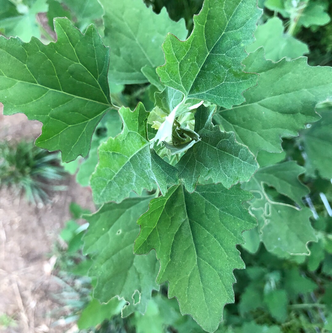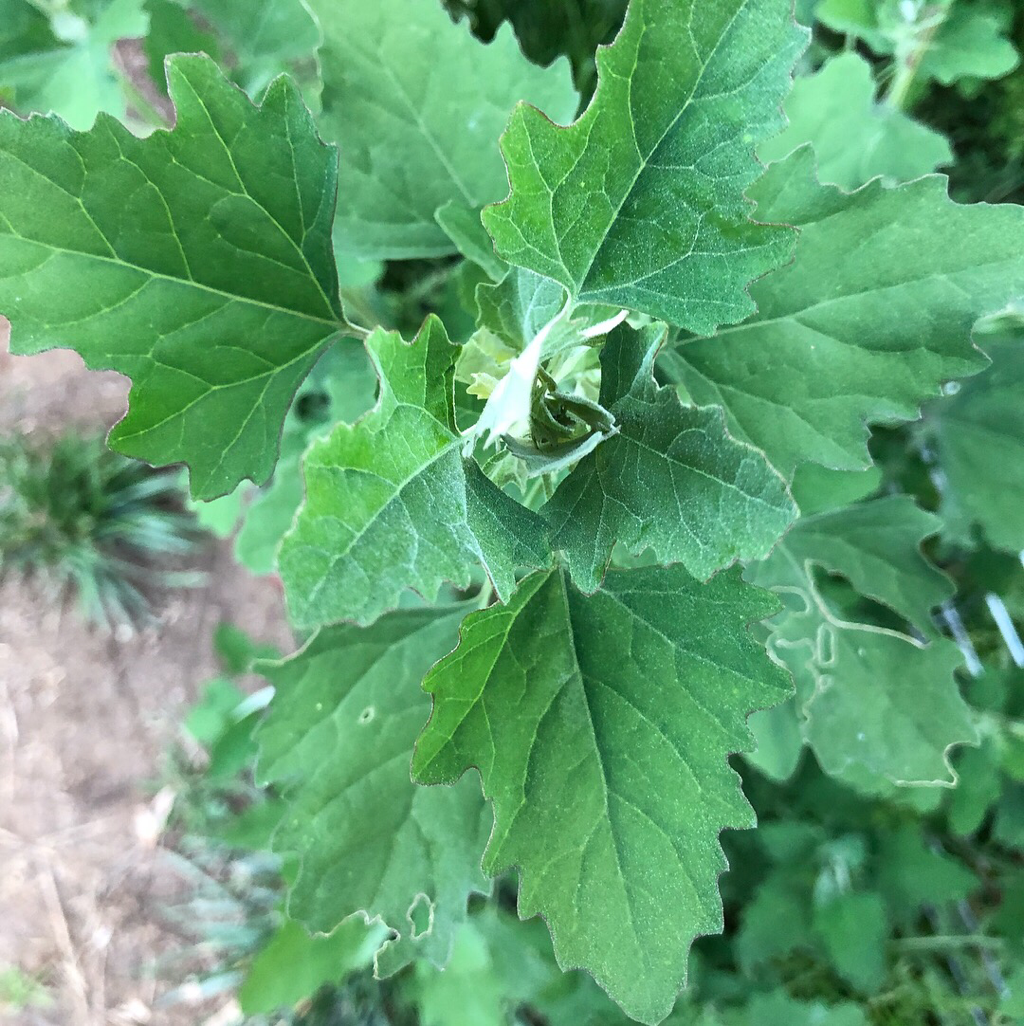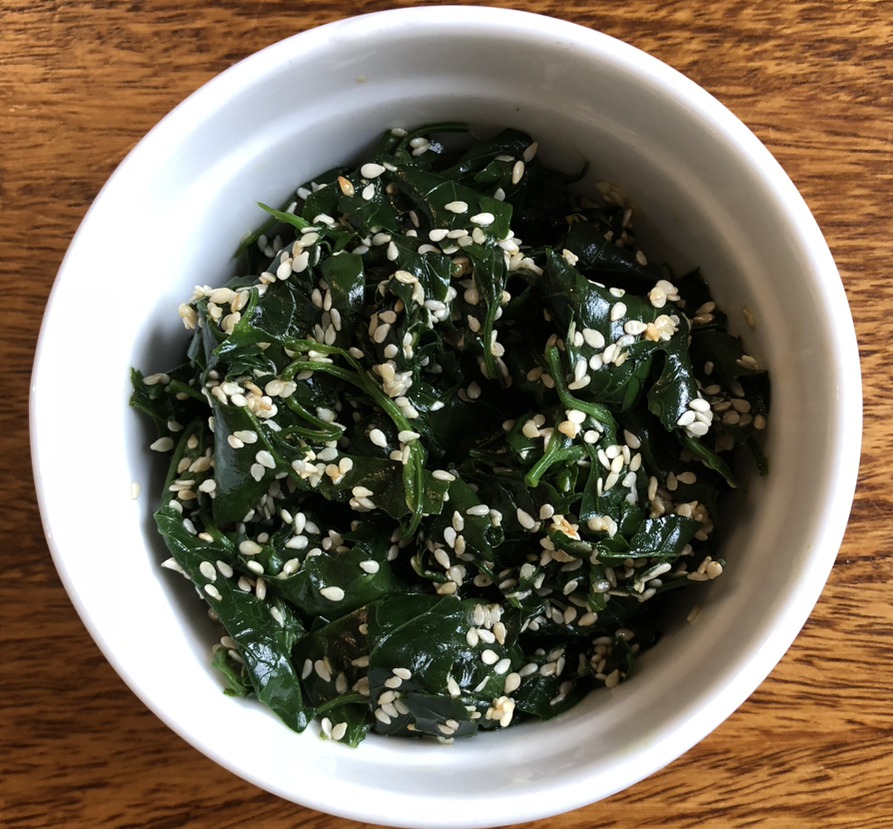| There's a bit of press out there about eating weeds and how healthy they are. But really, is it worth it? I am always game to try new things and have been experimenting all summer with some edible weeds. The verdict: some are a bit naah, but fat hen passes all the taste tests with flying colours. It tastes just like spinach - only it's nicer. No kidding, it really is! If there's one weed worth eating, this is it... |
Fat hen can be used just like spinach - they take a little longer than spinach to cook, but the flavour is richer, so you might want to try just a handful of leaves until you are familiar with its taste.
We have used it in stir fries very successfully, as well as some Indian curries where it's a traditional ingredient. My favourite dish by far was a side dish as part of a Korean dinner we had (we made bibimbap - a mix of rice and various vegetable side dishes and a fried egg which is delicious!). You might want to try making the following side dish with fat hen instead of spinach one day and hopefully you will be as impressed as we were. It was really good!
Ingredients:
250 to 450 grams of fat hen (or spinach)
1 and a half tablespoons of Japanese soy sauce
1 and a half tablespoons of mirin
1 tablespoon of lightly roasted sesame seeds
Method:
Quickly boil the fat hen until tender and drain well. Add soy sauce, mirin and sesame seeds and serve.
So we gave that a go too, as per the pictures below. Result: not bad, but I think I prefer the leaves. The flavour, like all fat hen is mild with a quiet richness, but the texture was quite dry, substantial and almost meaty. Blanch first and then add soy sauce or similar.
Finally, a little word of caution. Fat hen, like many leafy greens, does contain oxalic acid, which is a known anti-nutrient (it binds to some minerals, including calcium I think, making it harder for you to absorb them). Cooking breaks down the oxalates, however.





 RSS Feed
RSS Feed